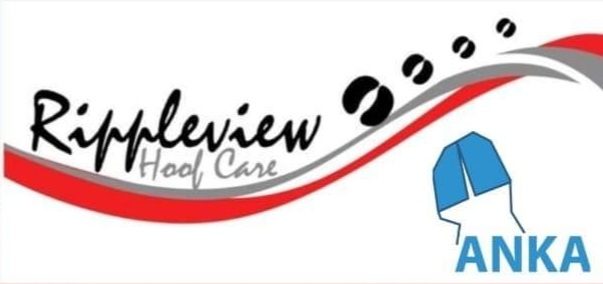The burden and challenges of cow health monitoring is growing as qualified personnel becomes scarce, labor costs rise, and herd sizes increase. Minimizing disruption of cow routines is also important to support improved performance.
In response to industry needs, availability of automated health monitoring systems has exploded. Most of the systems use wearable or non-wearable sensors to monitor one or more behavioral, physiological, or performance parameter associated with cow health. Rumination, activity, lying behavior, body temperature, and milk yield features are used alone or in combination to generate alerts that indicate potential health problems.
Lots of research has been done to understand how the parameters measured by these systems change when cows are affected by disease and lots of data has been generated. Dairy managers are most interested in best use of these technologies to improve herd management, which was the focus of our group’s studies.
HEALTH MONITORING AND THE VALUE OF AUTOMATION CAN VARY … A LOT
Dairy producers and those who have worked long enough in the dairy industry know that there is no such thing as a “typical” health monitoring program.
Some dairy farms practice relatively intensive health monitoring. For the first two to three weeks after calving cows usually undergo a systematic, once or twice-daily evaluation of their health. Either all or most cows in the fresh pen are evaluated, or cows are evaluated based on their days in milk (DIM). Conducting clinical exams on many cows is time consuming, labor intensive, and disrupts natural behavior and time budgets because most cows are kept in headlocks or palpation rails for examination. Many of the cows are disrupted to no benefit because they are healthy and do not need an exam. This is exacerbated in large herds where tens or hundreds of cows are examined just because of their DIM or pen. These intensive health monitoring programs usually entail detailed clinical exams including a thorough visual exam plus one or more diagnostic procedures such as rectal temperature measurement, auscultation, palpation, or collection of urine for additional tests. These take cow and people time!
Other farms implement non-intensive health monitoring programs. Many of these farms use exclusively or almost exclusively visual observation (VO) to select cows for clinical exams. A Cornell study reported that about 80 percent of NY dairy farms used VO for selection. On some of these farms, cows are visually observed thoroughly while eating in the feed lane. On many others this happens when cows are in their pens before or after milking or on the way to and from the parlor. Typically, these are times when is not as easy or there is not as much time to properly observe for signs of disease.
Our group recently conducted research to determine how automated health monitoring could help dairy farms with these opposing styles of health monitoring programs.
AUTOMATION versus INTENSIVE HEALTH MONITORING
To learn about the benefits and drawbacks of automated monitoring on farms with more intensive health screening, in a recent study we compared a program to select cows for clinical exams based primarily on automated health alerts (AUT-M) versus a high intensity traditional health monitoring program (HIC-M). Cows in the HIC-M group (n = 625) had a detailed clinical exam done every day from three to 10 days in milk (DIM) and thereafter had an exam done if we observed a reduction in milk yield or the cow was suspected sick by VO during a walkthrough of the fresh pen before milking (Figure 1).

Cows (n = 624) in the automated program (Figure 1), fitted with a neck sensor that monitored rumination and activity (HR Tags; Merck & Co., Inc.), were selected for a clinical exam with neck sensor or milk yield reduction alerts (MPC meter, Afimilk). Specifically, we used a health index score of less than 86 units and a reduction in milk production rate of greater than 15 percent. We also used VO as a safety net in this group because in a previous study we learned that not all cows with clinical disease had automated health alerts from the neck sensor system.
Fewer cows (about three percentage points) were diagnosed with a health disorder in the AUT-M (14 percent) than the HIC-M (17 percent) group. Although we speculated that most cows with clinical disease in the AUT-M group were probably detected, those that went undetected likely had a mild case of disease, especially metritis or mastitis. We know from previous studies, that changes in the sensor-monitored parameters in these cows are less than needed to generate alerts. Another caveat of the automated monitoring program was that about 15 to 20 percent of the cows never had automated alerts and cows were diagnosed because of detection by VO.
While the comparison of cows diagnosed with clinical disorders was interesting, our most important results were herd performance outcomes. We observed no statistically significant differences between treatments in milk yield and culling risk to 150 days in milk and no differences in first service heat expression or fertility.
Thus, our results suggest that health monitoring programs based on automated alerts could be as effective as a traditional intensive program. Despite the slight reduction in cows diagnosed with disease, we did not observe detrimental effects on group level cow health that could increase culling, reduce productivity, or reproductive performance.
From a practical perspective, this means that dairy farms may be able to successfully implement a health monitoring program that relies primarily, but not exclusively, on automated health monitoring systems data. Farmers can expect to identify most cows that need attention based on automated alerts and can use VO or mandatory clinical exams on some cows to compensate for those not identified based on automated alerts.
Another interesting finding from this study was that fewer cows were selected and had a clinical exam done in the AUT-M group. Thus, using automated health monitoring systems to replace intensive traditional health monitoring programs can also reduce substantially the number of cows selected for clinical exams, thereby minimizing cow disruption and reducing farm labor costs.
AUTOMATION versus NON-INTENSIVE HEALTH MONITORING
More recently, we conducted a trial to determine the benefits of health monitoring programs that rely on automated alerts compared with exclusive use of VO to select cows for clinical examination. We hypothesized that more cows with health disorders could be identified, and cows identified might be detected earlier with automated alerts than through VO only. We also thought that through improved herd health, milk production and reproduction would improve, and culling would be reduced.
Cows in the VO group (n = 597) were selected for a clinical exam exclusively based on VO of clinical signs of disease during a daily walkthrough of the fresh cow pen. Cows in the automated health monitoring group (AHM; n = 607) fitted with neck sensor-based automated health monitoring system (HR Tags; Merck & Co., Inc.) were selected for clinical exams based on health alerts consisting of a Health Index Score of less than 86 units, daily rumination time of less than 250 minutes, or a reduction of greater than 20 percent in daily milk yield.

As expected, more cows in the AHM group had a clinical exam and were diagnosed with a disease (Table 1).
However, to detect more cows with health disorders, more cows (about plus 50 percent) had a clinical exam. More cows diagnosed with diseases also meant that more cows went to the hospital pen, which resulted in more cows spending time in the hospital (Table 1).
A positive effect of finding and treating more cows with diseases in the AHM group was that these cows produced 1.5 kg more milk per day during the first three weeks of lactation than cows in the VO group. This effect was mostly from cows diagnosed with health disorders in the AHM group because milk yield was the same for cows not diagnosed with diseases in the VO and AHM group. We think this was because more cows received treatment, and potentially because more cows had milder cases of disease in the AHM group due to more aggressive monitoring. It is also possible that cows in the VO group produced less milk because of a delay in diagnosis and treatment as cows selected for an exam in this group were not examined until the next day due to farm operating procedures. Another improvement observed for the AHM group was a reduction in cows culled in the first three weeks of lactation. Conversely, we did not observe benefits on first service reproductive performance.
Thus, this experiment demonstrated that a fresh cow health monitoring program that relied exclusively on automated health alerts based on rumination time, physical activity, and milk yield was more effective than using VO alone to select cows for examination. Using automated health alerts resulted in greater milk yield and fewer cows culled in early lactation but increased substantially the number of clinical exams, treatments, and number of cows in the hospital. Work is underway to determine economics of these differences.
TAKEAWAYS
Although more work remains, our research with automated health monitoring systems demonstrates benefits and drawbacks of their use across the whole spectrum of farm management styles. Relying primarily on automated health monitoring systems, combined with minimally invasive VO, can be as effective as intensive traditional health monitoring. Under this scenario, scaling back the number of clinical exams helped reduce labor and cow disruption.
On the other hand, compared to VO only, automated monitoring identified more cows with diseases, which resulted in more milk and fewer cows culled. In this case, the extra labor for diagnosis and treatment of disease is likely offset by more milk revenue and less culling costs.
Julio Giordano, Martin Perez, and Clara Rial collaborated on this research through the Dairy Cattle Biology and Management Laboratory, Cornell University. Visit the laboratory’s website.
 |
This article appeared in PRO-DAIRY's The Manager in November 2024. To learn more about Cornell CALS PRO-DAIRY, visit PRO-DAIRY. |










